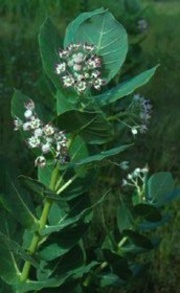Difference between revisions of "Akund"
Jump to navigation
Jump to search
m (Text replace - "== Authority ==" to "== Sources Checked for Data in Record ==") |
|||
| Line 16: | Line 16: | ||
Diameter = 20 micrometers | Diameter = 20 micrometers | ||
| − | == | + | == Sources Checked for Data in Record == |
* G.S.Brady, ''Materials Handbook'', McGraw-Hill Book Co., New York, 1971 Comment: p. 430 | * G.S.Brady, ''Materials Handbook'', McGraw-Hill Book Co., New York, 1971 Comment: p. 430 | ||
Revision as of 12:09, 29 April 2016
Description
A yellowish fiber obtained from the seeds of the Calotropis gigantea and Calotropis procera trees that are native to southern Asia and Africa. Akund is similar to kapok but its properties are slightly inferior. The soft fibers are used as upholstery stuffing. It is rarely used for fabrics. Akund has sometimes been called vegetable silk.
See also Bombax.
Synonyms and Related Terms
Calotropis gigantea; Calotropis procera; calotropis floss; madar; vegetable silk; vegetable floss; fibra de la calotropis profera (Esp)
Other Properties
Fiber length = 3 - 4 cm
Diameter = 20 micrometers
Sources Checked for Data in Record
- G.S.Brady, Materials Handbook, McGraw-Hill Book Co., New York, 1971 Comment: p. 430
- J.Gordon Cook, Handbook of Textile Fibres:I Natural Fibres, Merrow Publishing Co. , Durham, England, 1984
- Identification of Textile Materials, The Textile Institute, Manchester, England, 1985
